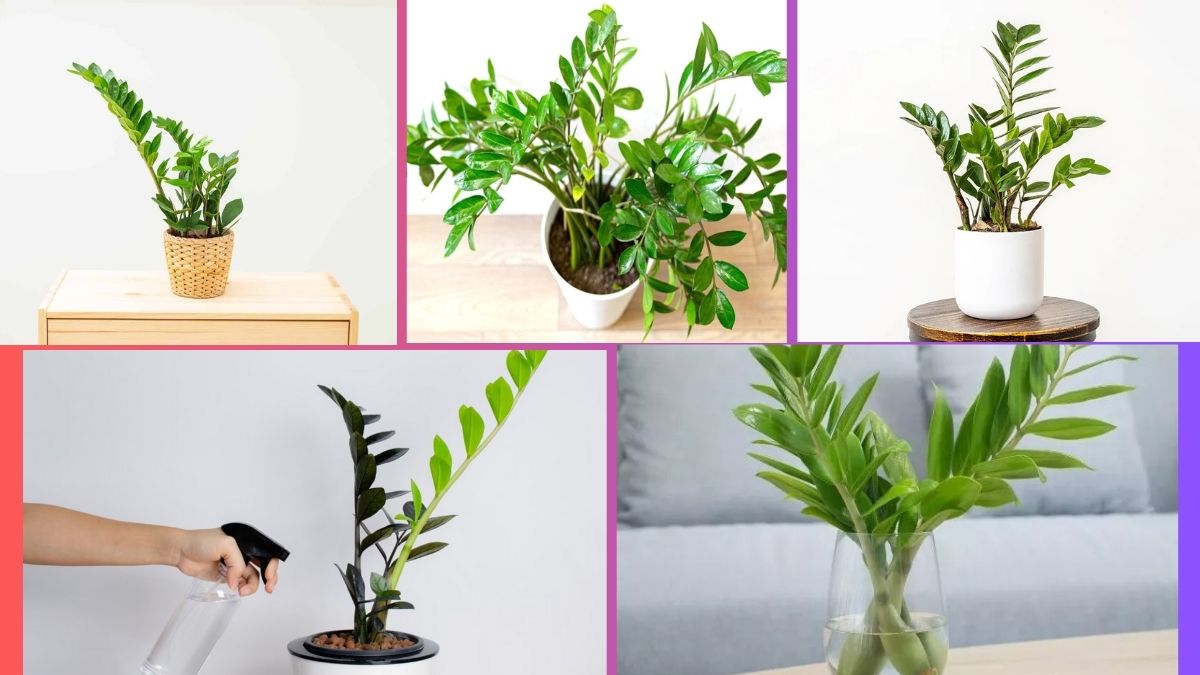Among the most popular houseplants for modern homes and offices, the ZZ plant (Zamioculcas zamiifolia) is prized for its glossy, deep green leaves, remarkable tolerance to neglect, and ability to thrive in low-light conditions. Native to Eastern Africa, this sturdy plant has earned a reputation as one of the hardiest and most beginner-friendly plants available.
One of the most frequently asked questions about ZZ plant care is:
“How often should you water a ZZ plant?”
The answer isn’t as simple as a fixed schedule — it depends on several environmental and plant-related factors. In this guide, we’ll explain the optimal watering frequency, the signs of overwatering and underwatering, proper watering techniques, and essential care tips to keep your ZZ plant healthy and thriving for years.
Introduction to the ZZ Plant
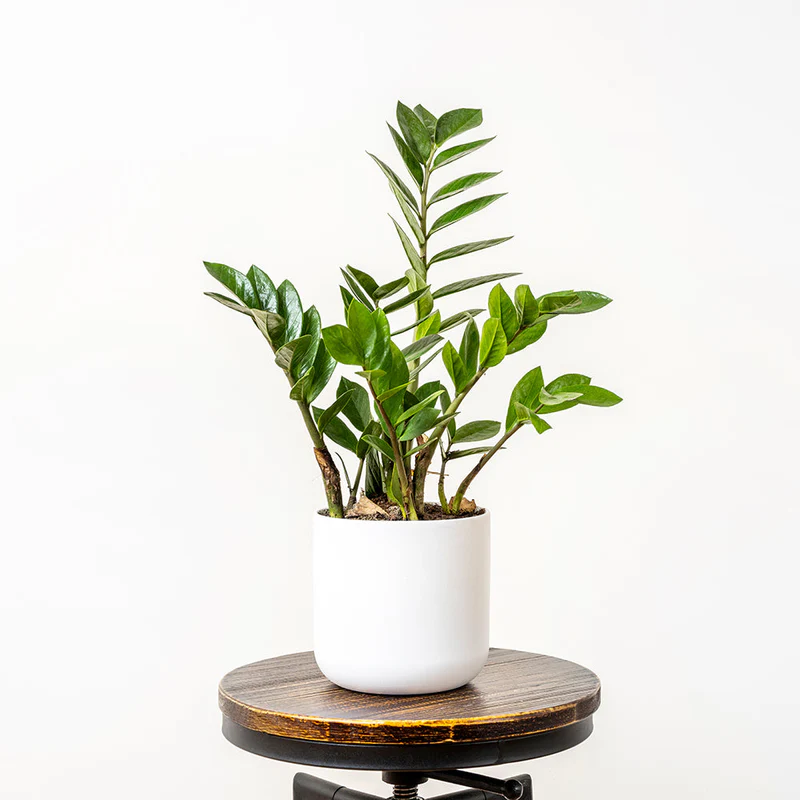
The ZZ plant originates from the dry grasslands and forests of Eastern Africa, where it endures periods of drought by storing water in its thick rhizomes — the underground, potato-like structures that act as natural water reservoirs.
This drought-tolerant nature makes the ZZ plant especially forgiving of irregular watering and an ideal choice for people with busy lifestyles or limited plant care experience. However, like all plants, it still requires consistent care — particularly when it comes to watering.
How Often Should You Water a ZZ Plant?
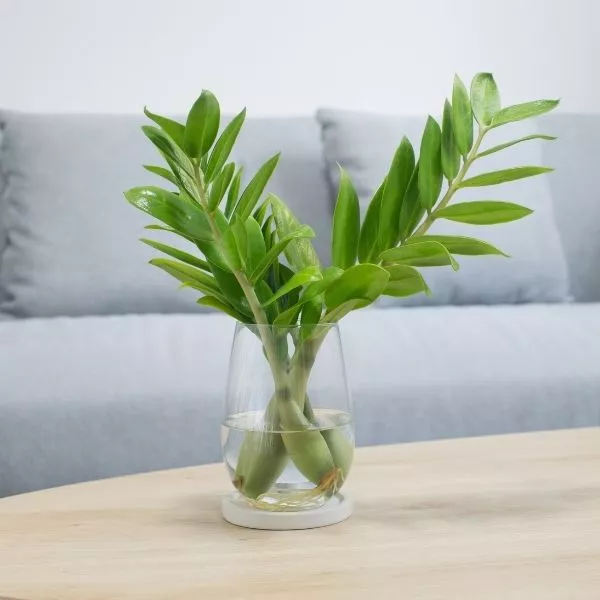
On average, you should water a ZZ plant every 2–3 weeks during its active growing season (spring and summer), and even less frequently — about every 3–4 weeks — in the cooler months (fall and winter) when growth slows down.
The most important rule for watering a ZZ plant is to let the soil dry out completely between waterings. Unlike many other houseplants, ZZ plants prefer being underwatered rather than overwatered.
Factors That Affect ZZ Plant Watering Frequency
To determine the most suitable watering schedule, you need to consider several important factors:
Season and Temperature
- Spring and Summer: Warmer temperatures and active growth increase water usage. Soil dries out faster.
- Fall and Winter: Plant growth slows, water needs decrease, and soil stays moist longer.
Indoor Climate and Humidity
ZZ plants thrive in average household humidity (around 40–50%). In dry, heated, or air-conditioned environments, water evaporates faster, requiring occasional adjustments to your watering routine.
Pot Size and Material
- Small pots dry out faster than larger pots.
- Clay or terracotta pots absorb moisture, encouraging faster drying than plastic or ceramic containers.
Light Exposure
ZZ plants can survive in low light but grow best in bright, indirect sunlight. The more light your plant receives, the faster the soil dries, increasing the watering frequency.
Soil Type
ZZ plants prefer a well-draining potting mix. A mixture of standard potting soil with added perlite or sand ensures good aeration and prevents water from sitting around the roots.
Signs Your ZZ Plant Needs Watering
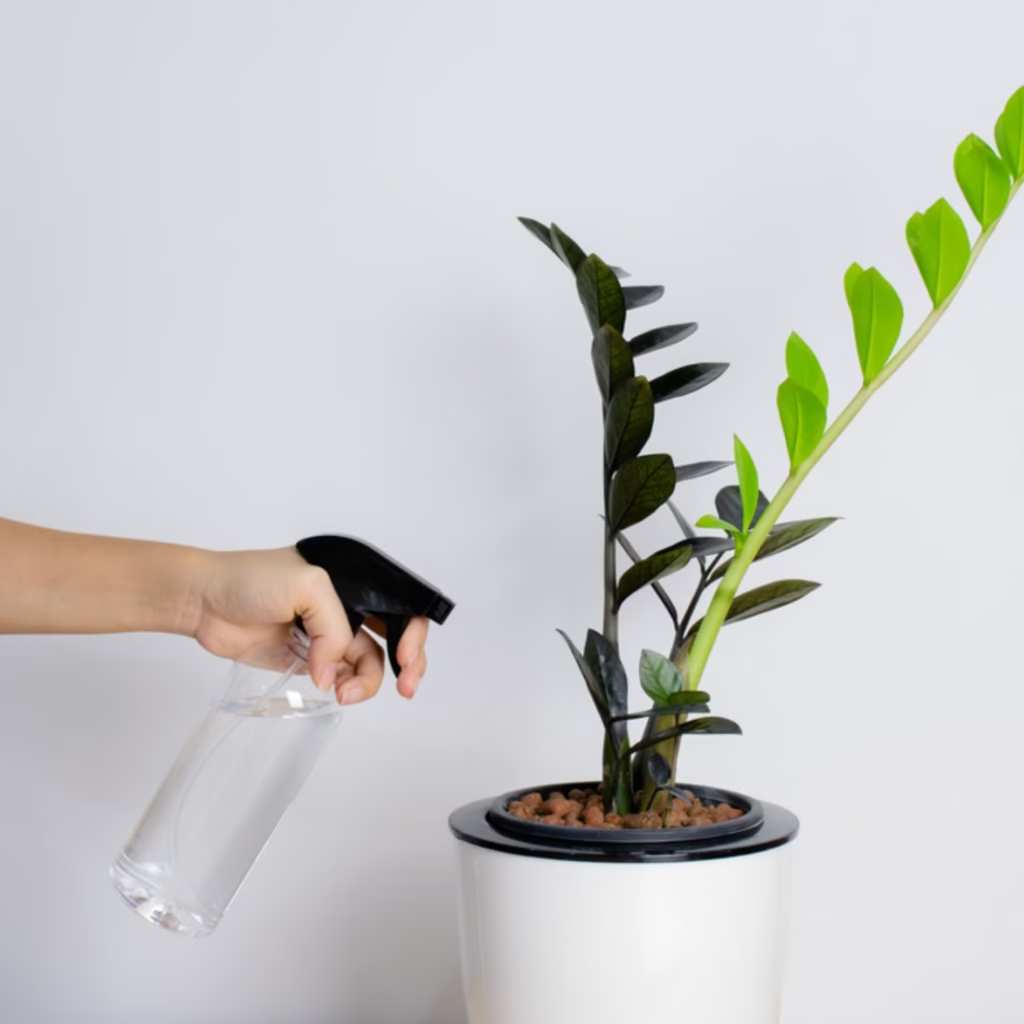
Even though ZZ plants tolerate dry soil well, they will eventually signal when they need water. Keep an eye out for these signs:
Dry Soil
Insert your finger about 2 inches into the soil. If it feels bone dry, it’s time to water.
Wrinkling or Drooping Leaves
The leaves may become slightly wrinkled, soft, or start to droop when the plant is thirsty.
Slow Growth
While ZZ plants grow slowly by nature, an excessively dry plant may stall new leaf production.
Yellowing or Browning Leaf Edges
Crispy brown edges or tips may indicate prolonged underwatering, though it can also result from low humidity.
Signs of Overwatering a ZZ Plant
Overwatering is the most common problem with ZZ plants, as their rhizomes hold moisture for extended periods. Watch for these danger signs:
Yellowing Leaves
Yellow leaves, especially widespread, are a telltale sign of too much water around the roots.
Mushy Stems
Soft, waterlogged stems indicate the onset of root or rhizome rot.
Foul Odor from Soil
A bad, sour smell is a sign of decaying roots due to overwatering.
Mold or Fungus on Soil Surface
Persistent wet soil encourages mold and fungus growth.
How to Properly Water a ZZ Plant
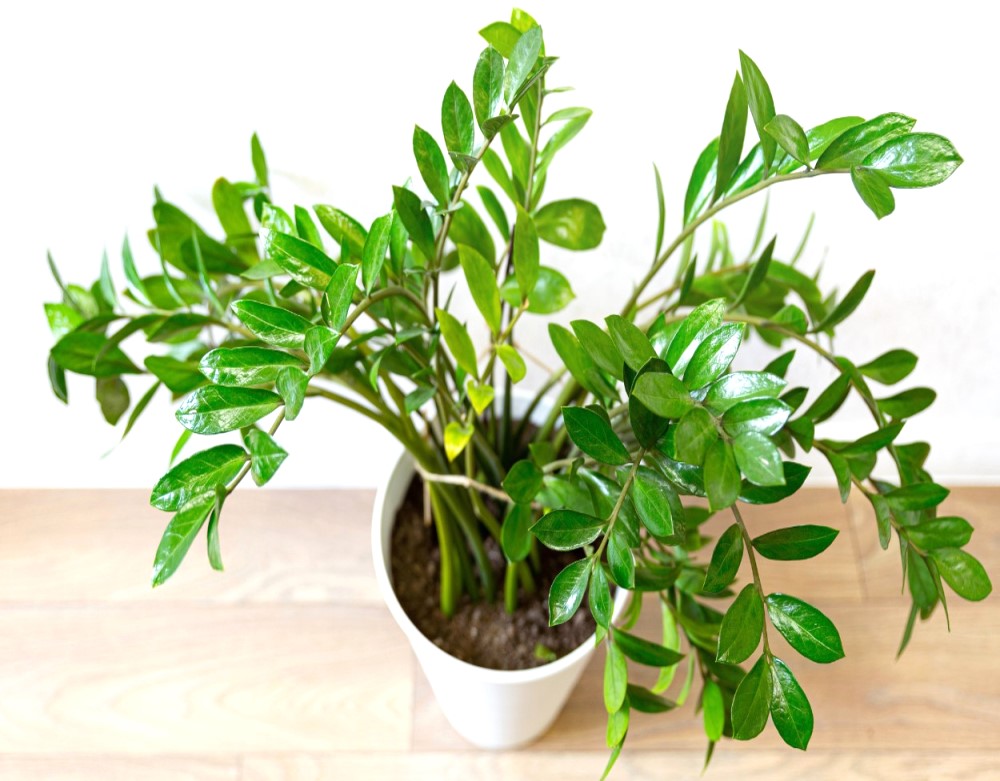
To avoid issues and encourage healthy growth, follow these watering guidelines:
Use the “Soak and Dry” Method
- Water thoroughly until it runs out from the pot’s drainage holes.
- Allow the soil to dry out completely before watering again.
Tip: Never let the pot sit in standing water in a saucer, as this can lead to root rot.
Check Soil Moisture Before Watering
Use your finger, a wooden stick, or a moisture meter to check soil dryness before each watering session.
Use Room-Temperature Water
Cold water can shock the plant’s roots. Always use water at room temperature for consistency.
Seasonal Watering Adjustments for ZZ Plants
Here’s a practical watering schedule guideline based on the seasons:
| Season | Watering Frequency | Notes |
|---|---|---|
| Spring/Summer | Every 2–3 weeks | Faster soil drying, increased growth. |
| Fall/Winter | Every 3–4 weeks | Slow growth, soil stays moist longer. |
Best Type of Water for ZZ Plants
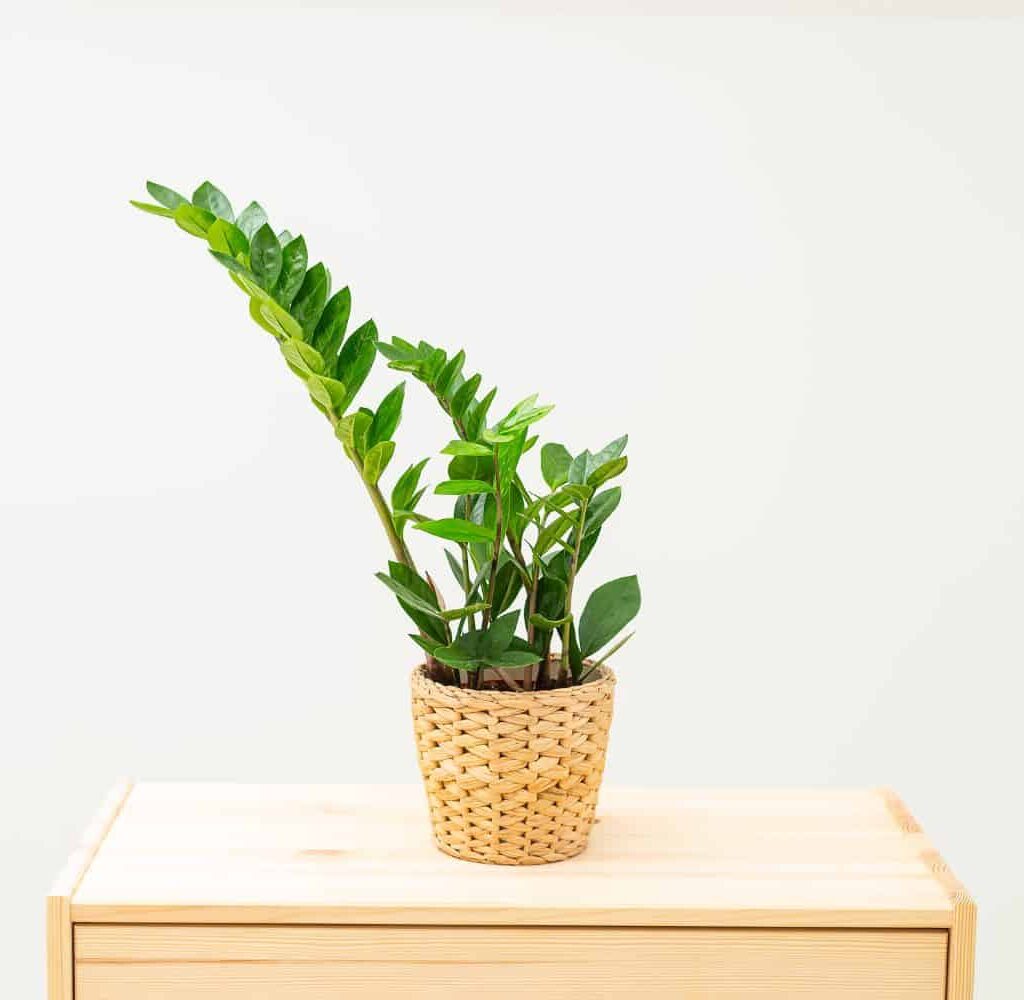
ZZ plants are fairly tolerant but may respond better to certain water types:
- Filtered or distilled water is ideal to avoid chemical build-up.
- Rainwater works wonderfully when available.
- Tap water left out for 24 hours helps chlorine dissipate.
Avoid water that’s heavily softened, as excess salts can harm the plant.
Additional ZZ Plant Care Tips
Watering is just one part of caring for a ZZ plant. Here are a few extra care tips to keep your plant happy:
- Light: Tolerates low light but grows better in bright, indirect light.
- Soil: Use a fast-draining, well-aerated potting mix.
- Humidity: Average household humidity is sufficient.
- Fertilizing: Feed once every 2–3 months during spring and summer with a balanced houseplant fertilizer.
- Repotting: Every 2–3 years, or when rhizomes crowd the pot.
Why ZZ Plants Prefer Underwatering
The ZZ plant’s natural habitat experiences alternating dry and wet spells. Its rhizomes store water for extended periods, allowing it to endure drought. This makes it far better to underwater than overwater a ZZ plant.
An underwatered ZZ plant will recover quickly after watering, while an overwatered one may suffer irreversible root rot.
Conclusion
How often should you water a ZZ plant?
The short answer: about every 2–3 weeks in warm months and every 3–4 weeks in cooler months. However, rather than sticking to a rigid schedule, it’s crucial to check soil moisture and adjust watering based on light, temperature, pot size, soil type, and humidity.
ZZ plants are hardy, resilient, and forgiving — especially when slightly underwatered. By mastering a thoughtful watering routine and observing your plant’s cues, you’ll enjoy a glossy, thriving ZZ plant that brings life, elegance, and low-maintenance beauty to your home or office.
